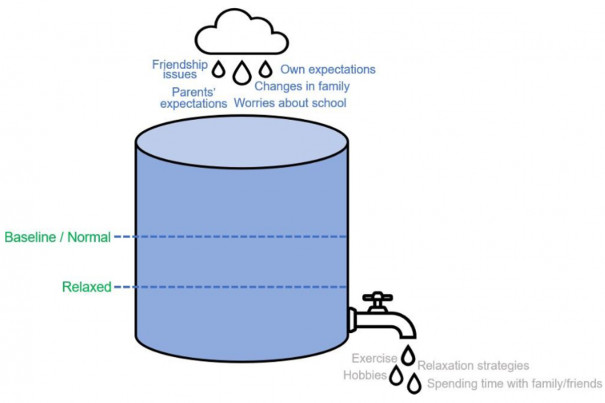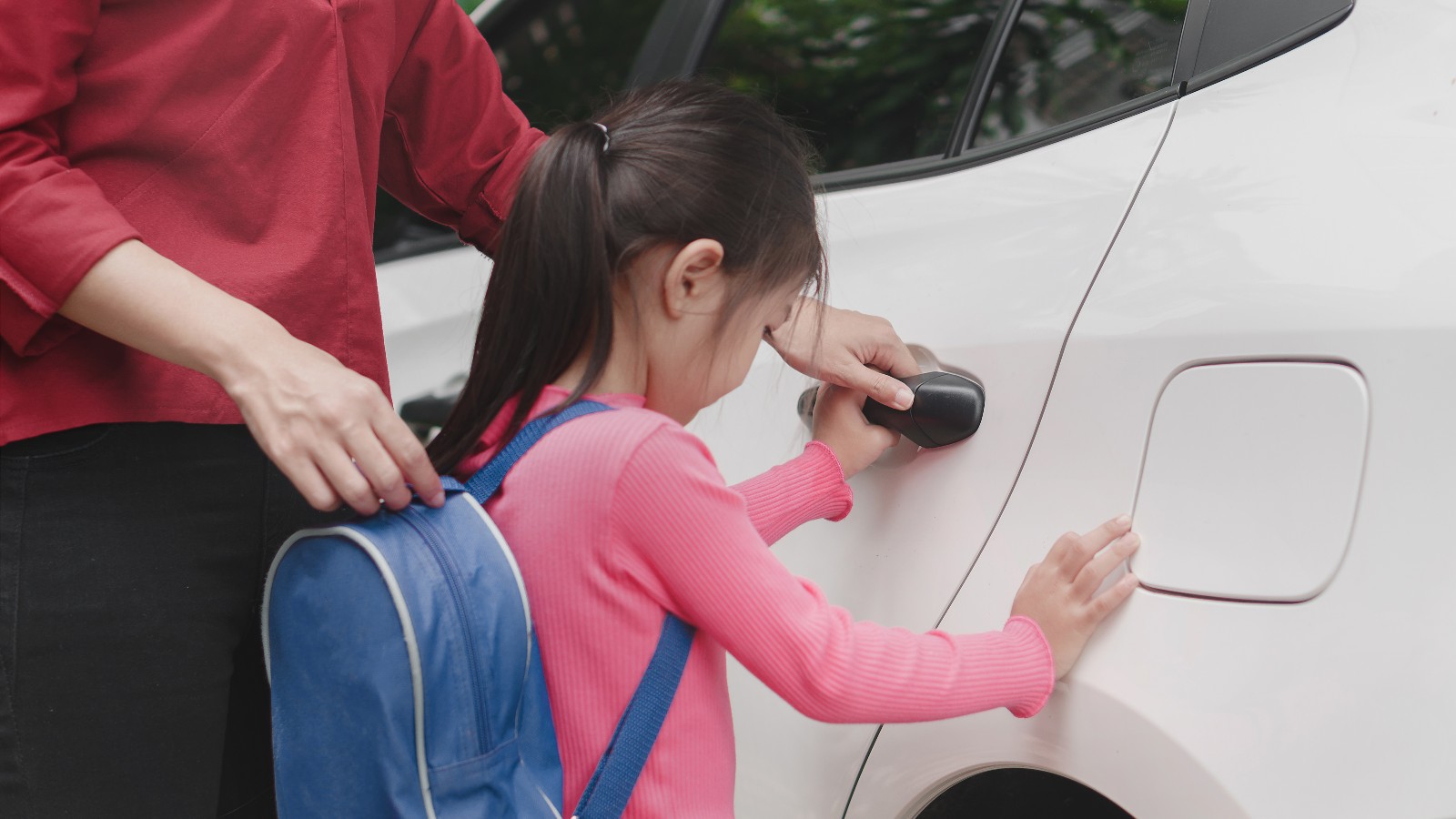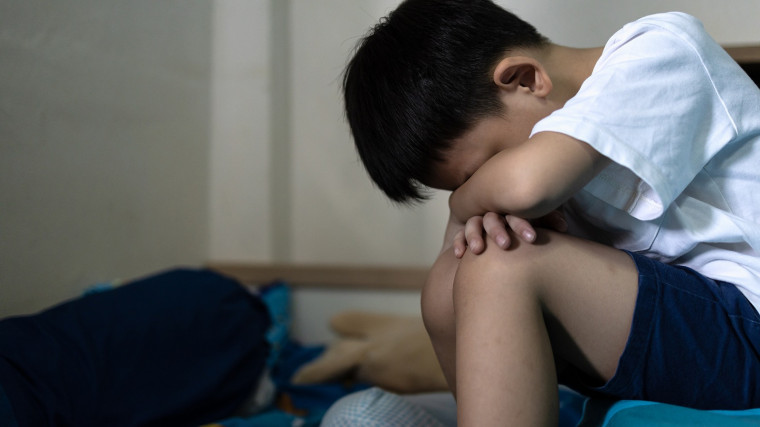|
Audio Version Available
|
In today’s society, we use the words “pressure” and “stress” interchangeably, but there are subtle differences.
Pressure refers to the demands made on a person, and stress occurs when that pressure overwhelms, manifesting in negative outcomes.
There are differences in how children respond to stress as compared to adults.
In children, stress often manifests as physical ailments, such as headaches or stomach aches, or show physical symptoms such as vomiting. Changes in appetite or sleep patterns also occur.
They may also show behavioural changes, such as social withdrawal. They may appear more irritable — crying or throwing tantrums. They could also lose interest in things they previously enjoyed, such as food or hobbies.
In more severe cases, children may display signs of school refusal. When children miss school, catch-up work accumulates. They may also feel embarrassed or anxious about what to tell their classmates when they do return. Consequently, what started off as a few days of missing school could evolve to weeks or even months of absenteeism.
Why do children feel stress?

It may be difficult to comprehend why some children can take things in their stride while others appear to struggle. It’s often a matter of nature versus nurture.
A child’s temperament is largely determined by genetic makeup. It influences how they interact with the environment or with others, and it also has an impact on their moods, activity and energy level, attention span and adaptability.
Most children are a mix of three main temperament types: Easy-going, slow-to-warm, and active-alert.
Easy-going children are generally happy and adaptable. They don’t get upset easily and adapt to new situations or changes better than a slow-to-warm or difficult peer who may repeatedly face problems in adjustments or appear more emotionally reactive.
Slow-to-warm children are usually more timid and reserved. They may take longer than their easy-going peers to warm up to new people and situations.
Active-alert children are always on the go. They’re curious and full of energy. They may be less patient than easy-going children and have a shorter attention span.
Although temperament is mostly genetic, it can be influenced by the environment.
For example, a daughter who grows up in a family where Mum and Dad often fret over her older siblings may learn to react to stressors by feeling frantic or overwhelmed easily.
Conversely, someone with consistently supportive parents may be confident in his own ability to handle setbacks and stress.

But children also have their own expectations.
Some children may be used to having strong academic results, so whenever they do well, they think: “I’m good, maybe I can do better!”, setting even higher standards for themselves the next time.
When they fall short of their own expectations, they engage in negative self-talk: “This shouldn’t have happened! I’m just not good enough!”
Some may view these as failures, dealing a blow to their confidence, and they struggle to accept these outcomes. This may be true even if their parents tell them they are satisfied with their performance.
A child’s temperament is just one factor that can influence how they respond to stress. Other factors include:
- Family history of mental health issues
- Family environment (such as poverty, degree of parental involvement)
- Trauma (such as witnessing violence, death)
- Chronic medical conditions
One of my clients, Tommy (not his real name), is a Pri 5 pupil. He is a good student and his parents do not have any issues with his academic performance. He has a good relationship with his parents and siblings, and everyone in the family is supportive and genuinely caring to one another.

But when Tommy makes a mistake (for example, forgetting to do his homework or leaving assignments at home), he very quickly engages in negative self-talk by saying things like “I’m a bad person” or “I should be punished”, even though his parents or teachers reassure him that occasional mistakes are natural.
This meant that Tommy would often feel down for long periods of time because he finds it difficult to move on from those “mistakes”, even when he is comforted and reassured by loved ones.
Stressors faced at different stages of psychosocial development
According to Erik Erikson’s theory of psychosocial development, children from 5 to 12 years old go through a stage (called Industry vs Inferiority) where they begin to recognise differences in abilities or talents with their peers. Such comparisons could lead to feelings of either confidence or inferiority.
From ages 12 to 18, the psychosocial crisis (Identity vs Confusion) manifests as teens develop their own identity and sense of self by examining their values and beliefs.
Interpersonal difficulties can be stressful at this stage as friendships play a substantial role. Some may experience bullying or get ostracised. In the long run, adolescents who struggle to respond to or cope with such difficulties adequately may find themselves feeling more negative emotions, to the extent of feeling helpless or worthless.
Other stories you might like




Other factors include life changes such as moving house, new siblings, new schools, new classmates, or having longer days at school. Time to adapt and adjust is required.
Understanding the stress “bucket”

Imagine our capacity to take whatever life can throw at us as a bucket. In that bucket are two levels that determine our overall well-being — “relaxed” and “normal”.
Below the lower threshold is where one feels relaxed.
Between “relaxed” and “normal” is the “right” amount of pressure where we are not completely relaxed, yet able to go about our daily lives without any impairment.
As pressure builds, a person’s bucket gets filled above the normal threshold, and experiences stress. Sometimes the bucket overflows, overwhelming the person.
This could happen when a child experiences multiple setbacks in a short period of time, such as failing expectations, or having relationship trouble.
This “stress” bucket gets emptied by turning a “tap”, which represents biological, social and psychological strategies to relieve the pressure and to reduce the stress.
Sleeping and eating schedules

Sleep is one of the important pillars of our physical well-being – many of our body’s processes are dependent on good sleep.
Important tips to maintain sleep hygiene include:
- Regular and adequate sleeping hours: Children between 6 and 12 should have 9 to 11 hours of sleep while teenagers up to 18 years old need about 8 to 10 hours. Sleep deprivation affects mood, appetite, attention and other bodily functions. Conversely, sleeping too much may result in grogginess and (ironically) fatigue, increasing the risk of health problems.
- No screen time at least 30 minutes before bedtime.
- Ensuring that the room is dark enough.
- Daytime naps should not be longer than 45 minutes, so as to not interfere with nighttime sleep quality.
- Not using the bedroom to do work or other activities, so that the mind associates the bedroom only with sleep.
A balanced diet is also important for physical well-being.
Parents should encourage healthy eating habits from young, such as maintaining low levels of salt or sugar intake, so that their children may be able to continue similar habits when they start school and have more freedom with their food choices.
Five ways to help children manage stress

Here are five simple steps to help your children learn to manage stress levels on their own.
Create a family routine to provide an opportunity for everyone to share about their highlights and their struggles.
Use open-ended prompts such as “what was your favourite part of the week?” or “was there any difficult time this week?” to get the conversation going.
The aim is to encourage open communication and build trust within the family, where children feel that their emotions are being validated and listened to.
Parents may signal that they can be a listening, non-judgemental ear by using phrases like “I would feel the same too if that happened to me!”.
Practise relaxation strategies, such as deep breathing or progressive muscle relaxation, together.
Inhale through the nose over four counts, and exhale through the mouth over four counts. Repeat this cycle five times or until you notice your breathing and heart rate slowing down.
Progressive muscle relaxation can be done lying down or sitting. Working upwards from the feet, intentionally tense up muscle groups for five seconds before releasing the tension. Progressively move through the different muscle groups, eventually ending with tensing and relaxing our facial features.
Such exercises could be practised regularly as a good habit, to help children be more prompt in applying them in stressful situations.
Practise mindfulness
To be mindful is to be fully present, observing and intentionally paying attention to what is happening within and around oneself, without judgement.
When children are more mindful, they are better able to recognise when they are coping well, or when they are feeling overwhelmed, sad, or anxious.
There are many mindfulness exercises appropriate for children and families, such as tuning in to our five senses of sight, hearing, touch, taste, and smell, or doing a body scan.
Help your children learn to self-soothe
Self-soothing is a technique to help them calm down or reduce the amount of distress that they experience.
They could look at pictures of places that they like or find relaxing (sight), listen to soothing music or their favourite songs (sound), take a warm shower or snuggle with a bolster (touch), eat their favourite snack or have their favourite drink (taste), or enjoy relaxing scents such as peppermint or lavender (smell).
Engage your children meaningfully beyond academics

The weekend isn’t just for tuition classes, consider these alternatives:
- Physical: Cycling, trekking, or team sports like table tennis or badminton are fun group activities.
- Social: Apart from family gatherings, friendships are important social interactions. Where possible, encourage your children to invite friends over to do something fun together – this could allow parents to get connected too!
- Leisure: Learn new hobbies purely for enjoyment. For instance, they could enjoy playing card or board games, baking, photography, or gardening.
- Mastery: Learning a new skill (such as playing an instrument, learning a sport, or picking up a new language) helps children develop a sense of accomplishment, strengthen self-confidence and self-esteem. But it is important that the child is intrinsically motivated (wanting to learn for themselves), rather than being extrinsically motivated (for example, doing it only for a reward).
For example, with Tommy, he found it helpful to let his parents know when he needs some time to take a walk; it’s good family bonding time too. He also plays sports like football and taekwondo. In his spare time, Tommy also reads and doodles.
All these activities have helped Tommy live a more well-balanced life that is more resilient towards stress.
Other stories you might like




It is essential to cultivate a home environment where your children feel comfortable and safe to share things with you.
Every little step goes a long way, and it is better late than never to try some of the above strategies to help them manage stress better, and enjoy a better quality of life.
If you like what you read, follow us on Twitter and Google News to get the latest updates.


